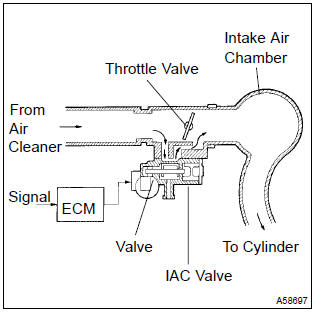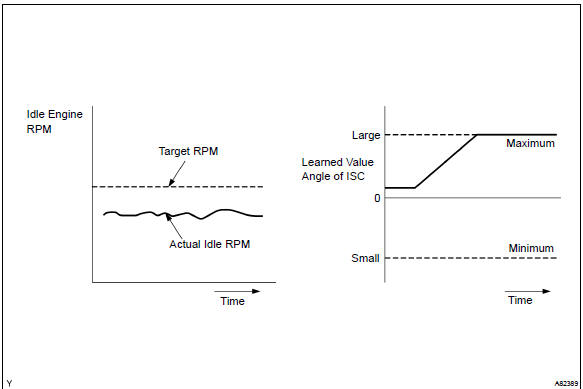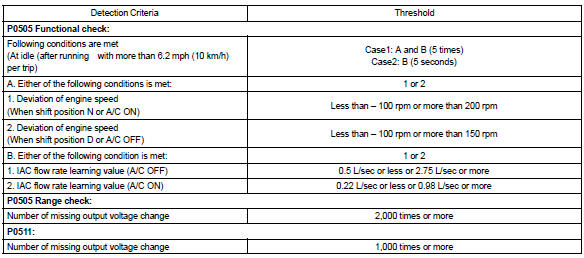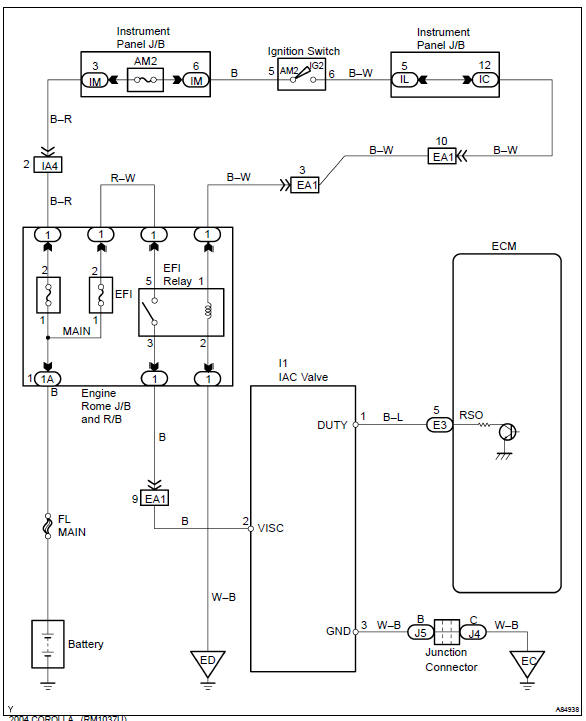Toyota Corolla (E120) 2002–2008 Repair Manual / Diagnostics / Sfi system / Idle air control System/ Circuit / Circuit description
Toyota Corolla (E120): Circuit description

The rotary solenoid type idle air control (iac) valve is located under the throttle body and intake air bypassing the throttle valve flows into the iac valve through the passage.
In this way the intake air volume bypassing the throttle valve is regulated, controls the engine speed.
The ecm operates the iac valve only to perform idle–up and provide feedback for the target idling speed.

Monitor description

The idle speeds are determined depending on the volume of air that passes through the iac valve. When the volume is large, the idle speed becomes higher. When the volume is small, the idle speed becomes lower.
The iac valve controls the air volume that bypasses the throttle valve. The engine control module (ecm) sends duty signals to the iac valve and drives the iac valve stepper motor to determine the air volume that bypasses the throttle valve.
Although the ecm regulates the idle engine rpm with the feedback control in several vehicle stopped, actual idle rpm does not reach the targeted rpm and a learned valve angle of the idle air control (iac) remains at the maximum or remains at the minimum, the ecm determines to detect malfunction in the iac system.
Example: if the rpm difference between the targeted and actual idle engine rpms exceeds 200 rpm (*1) with the vehicle stopped in an idle, and this occurs 5 times, or if the learned value angle of the iac remains at its maximum or minimum angle for 5 seconds, p505 is detected.
P0511 is detected as an open/short circuit in the iac if the rate of duty signal input to the iac valve has stuck at 0 or 100 %.
*1: Threshold rpm is varied by an engine load.
Monitor strategy

Typical enabling condition

Typical malfunction thresholds

Component operating range

Wiring diagram

Other materials:
Glossary of sae and toyota terms
This glossary lists all sae–j1930 terms and abbreviations used in this manual
in compliance with sae recommendations,
as well as their toyota equivalents.
...
Windshield/windowglass/mirror
Preparation
Recomended tools
Equipment
Ssm
...
Inspection procedure
1 Check side squib(rh) circuit(airbag sensor assy center – front
seat airbag assy rh)
Disconnect the negative (–) terminal cable from the battery,
and wait at least for 90 seconds.
disconnect the connectors between the airbag sensor
assy center and the front seat airbag assy ...


